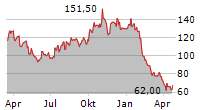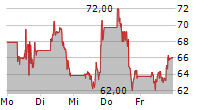The Medical Genome Initiative presents a paper in an effort to expand patient access to sequencing
Originally published on Illumina News Center
NORTHAMPTON, MA / ACCESSWIRE / April 17, 2024 / A recent literature review, published in the Nature journal Genomic Medicine, showed that short-read genomic sequencing (GS) reduces the time it takes to diagnose and treat pediatric patients who may have a rare genetic condition. This evidence supports efforts to make GS the first-line standard of care, particularly for patients in neonatal intensive care units (NICU) and other critical care settings.
"Historically we have used a stair-step approach to diagnose these conditions, starting with the least comprehensive tests," says Ryan Taft, PhD, vice president of Scientific Research at Illumina and an author of the study. "If the first efforts fail to produce a diagnosis, more sophisticated tests are then used, and eventually genomic sequencing is used as a last resort. But this approach wastes time and resources and can be emotionally devastating for families who are left without answers. The evidence shows that, in many cases, sequencing is the most effective diagnostic approach-whenever possible, we just use genome sequencing as our first port of call."
The study was conducted by the Medical Genome Initiative (MGI), a consortium of clinical genomic sequencing laboratories working to expand access to high-quality GS. As reported in their latest manuscript, there is significant evidence that genomic sequencing excels as a diagnostic test for rare genetic diseases, but clinical adoption has been unexpectedly slow.
To fully assess the evidence for GS in rare genetic disease populations, the MGI conducted a focused literature review and meta-analysis. A total of 71 papers met their criteria, published between January 2014 and August 2022, which included over 13,000 patients. The studies were evaluated based on their analysis strategies, including the types of variants analyzed, interpretation guidelines, health care settings, secondary findings, turnaround times, cohort phenotypes, diagnostic yields, and clinical utility.
Overall, the study found an average diagnostic yield of 45% for first-tier genomic sequencing, compared to 33% in groups that had received earlier genetic testing and 33% in patients who did not receive a diagnosis from exome sequencing. Clinical utility was reported by one-third of the studies. Changes in management described included outcome efficacy across diagnostic thinking, treatment, patient outcomes, and social impacts, and the authors found a broad range of reported rates of changes in management (20%-100%) since the methods used to assess clinical utility varied from one study to the next.
"The evidence shows that, in many scenarios, genomic sequencing should be the first-line genetic test," Taft says. "Pediatric patients in intensive care units who have unexplained conditions should be first in line. Also, if a targeted panel doesn't include all the suspected genes that might be causing the child's condition, comprehensive genomic sequencing can fill those gaps."
In addition to offering high diagnostic yields, genomic sequencing is fast. Rapid approaches, pioneered over the past few years, can produce results in a matter of days, a capability that has been particularly beneficial for critically ill babies in NICUs. Less comprehensive alternatives to GS can waste precious time and delay much-needed diagnoses.
While this review highlights the many benefits of genomic sequencing in critical care settings, more work remains to be done. The authors found little published research on first-line GS in outpatient and other less urgent scenarios. Additional studies will be needed; however, for many patients, the evidence clearly supports the clinical efficacy of genomic sequencing.
"There is still resistance to pursue genomic sequencing because of the perception that the price is too high," Taft says, "but this fails to account for recent dramatic reductions in GS costs and its impact on the downstream continuum of care. Getting precision answers sooner, particularly for patients with rare genetic disorders, is almost always the most cost-effective approach."
Register here for the Medical Genome Initiative's webinar on April 25, 2024. Sponsored by Illumina, Dr. Kristen Wigby will speak on topics related to whole-genome sequencing for rare disease.

View additional multimedia and more ESG storytelling from Illumina on 3blmedia.com.
Contact Info:
Spokesperson: Illumina
Website: https://www.3blmedia.com/profiles/illumina
Email: info@3blmedia.com
SOURCE: Illumina
View the original press release on accesswire.com



